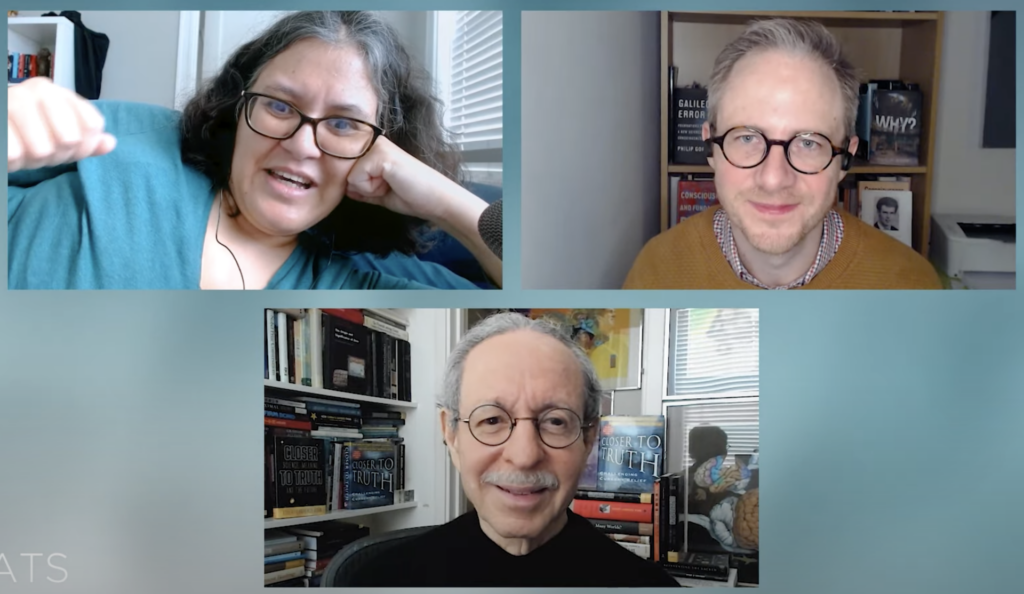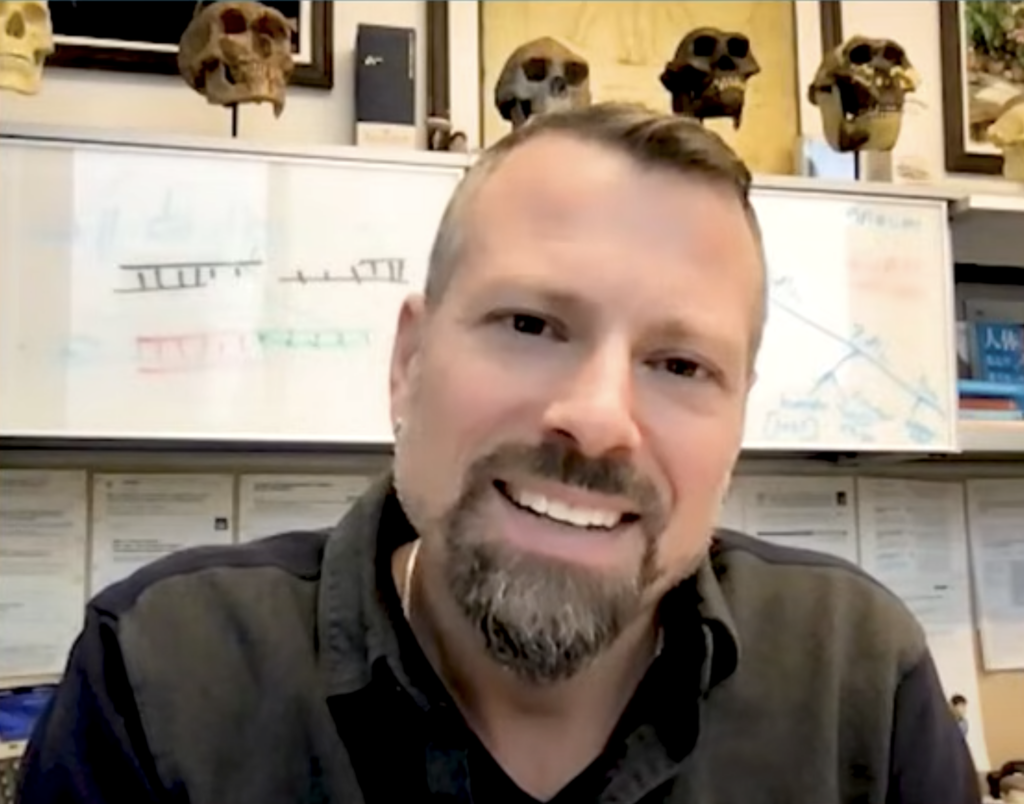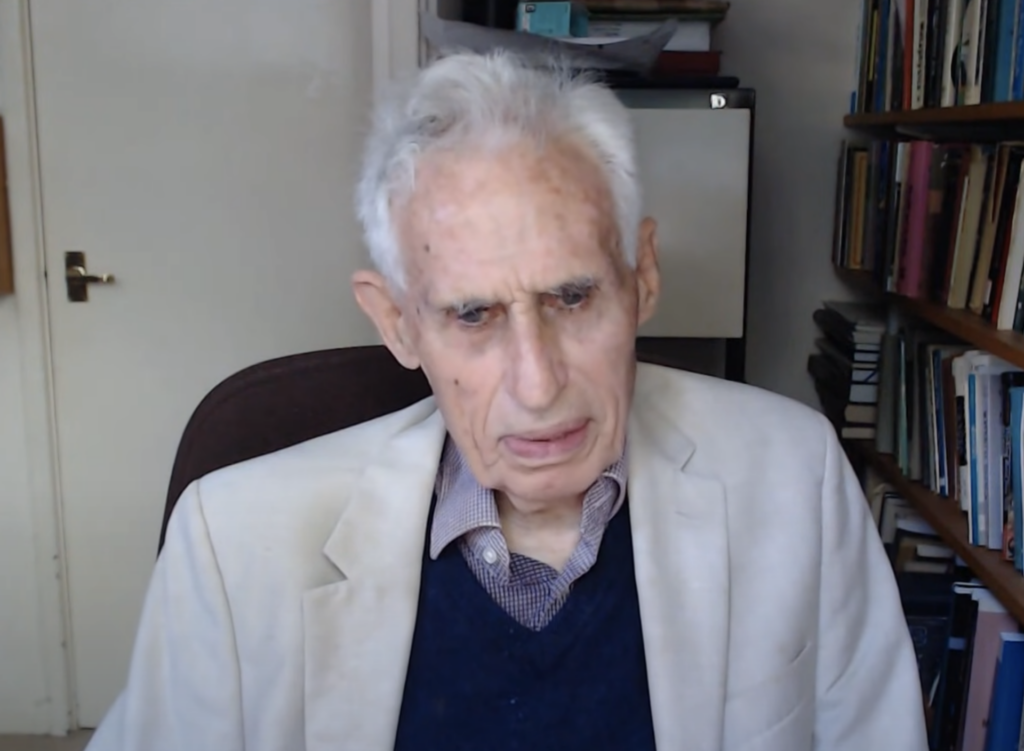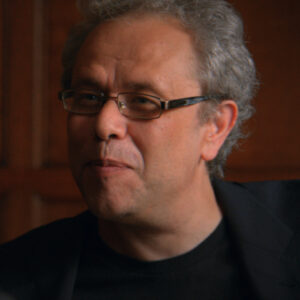video
Topic Series
John Hawthorne
- Robert Lawrence Kuhn
- John, I've had this strange lifelong obsession to know what's real, what things in the existence are really there. So my scientist friends say particles and forces and those who are religiously inclined add spiritual realms or God and all of that, but as a philosopher, you look at reality in a little bit different kind of way, so help me understand what's real.
- John Hawthorne
- I don't think I have some really weird or distinctive sort of take on these things. I think it's first good to think about what you started with in terms of what your scientist friends think. I mean, if you ask you scientist friends are there voltmeters, they'd probably say yes rather than no, and is a voltmeter a particle? No. Is it a force? No. So in a way you mischaracterized what you're, or maybe they're mischaracterizing themselves. Maybe when you ask the question that way, they feel they've got to say something feasible.
- Robert Lawrence Kuhn
- Yeah, but that's totally reductionist in their view, because they don't look upon a voltmeter as something other than a construct of something that's not real, or it's constructed.
- John Hawthorne
- So a voltmeter isn't real?
- Robert Lawrence Kuhn
- It's constructed.
- John Hawthorne
- But that's a fudge answer, so–
- Robert Lawrence Kuhn
- Okay.
- John Hawthorne
- —so constructed things aren't real?
- Robert Lawrence Kuhn
- Constructed real don't have the same level of reality that something underneath it would, of which it's constructed.
- John Hawthorne
- But it's natural to think, at least naively, that there's, well, there are some things and there are some things that there aren't, so there aren't mermaids, there are electrons,
- Robert Lawrence Kuhn
- Right.
- John Hawthorne
- So we get the hang of that. There aren't mermaids, there aren't ghosts, unless you know some Irish fables, alright, or whatever.
- Robert Lawrence Kuhn
- Right, but there is the idea of mermaids. There's an idea of mermaids.
- John Hawthorne
- Right, so, there are ideas of mermaids, there are pictures of mermaids, there are books about mermaids, there aren't mermaids.
- Robert Lawrence Kuhn
- Right.
- John Hawthorne
- So it's very important to distinguish the one question: is there a book about mermaids, and the question is there an idea about mermaids, and the question are there mermaids?
- Robert Lawrence Kuhn
- Okay.
- John Hawthorne
- And the natural answer, you know, which seems like a pretty good answer is no to are there mermaids, yes to are there ideas about mermaids, yes to are there books about mermaids, and then if we carry on like that. So I'm just, at least as a starting point, we've got to get straight what our natural intuitive picture is, is that there are voltmeters and there are particles. It doesn't seem like voltmeters are like mermaids
- Robert Lawrence Kuhn
- Right. But voltmeters have a greater claim to existence but, but if the ideas of mermaids exist, the ideas exist, that's something that exists–
- John Hawthorne
- That's something, yes.
- Robert Lawrence Kuhn
- –that's real.
- John Hawthorne
- Right, that's real. So you can add those to the list, ideas about mermaids. So we've got, you know.
- Robert Lawrence Kuhn
- Right.
- John Hawthorne
- But we've already got a fairly expanse, if we just start with our sort of intuitive, our intuitive views, I mean, we put a whole bunch of things on the list like particles and voltmeters, and chairs and tables, and ideas about mermaids, and ideas about statutes, and ideas about electrons and so on and so on. And then we get to slightly tendentious things–
- Robert Lawrence Kuhn
- Like what?
- John Hawthorne
- –like God and angels, on the one hand, and maybe, the numbers people would start, you know. But still, if we think about it just naively in terms of there are questions, if you're asked are there numbers between two and seven, you'd say yes; you wouldn't say no. So it looks like at least the first pass is that there are, you know. We can get a big long list just by asking, there-are questions.
- Robert Lawrence Kuhn
- Okay.
- John Hawthorne
- So then, there are a few ways to go from there. We start compiling a list just by asking, there-are questions. And I think that's a good place to start.
- Robert Lawrence Kuhn
- I like that.
- John Hawthorne
- Are there, and then put a noun there, a common noun, and see what people say. And I think you'll find convergence on you know if you ask physicists are there voltmeters, they'll say of course there are.
- Robert Lawrence Kuhn
- Yeah, right.
- John Hawthorne
- Then, one thing to think about is, is there something that's added to the question of such-and-such real? You know having said there are tables, is there some further question, are tables real? It doesn't sound like it to me. I mean if you really think there are tables, you seem to be done with the question are tables real. Isn't not like well we've discovered there are tables now let's move on to this extra question are there these tables that there are real or are they non-real, and it seems if there are some, then they're real. So I don't think the question are tables real, on the face of it at least, it doesn't add anything to the question of the tables, and on the face of it, everyone thinks there are tables and on the face of it, it's a really tough, you wouldn't really expect a scientist to come along and have some really good argument that there aren't tables.
- Robert Lawrence Kuhn
- But there is stuff that once you say there are X, that there is a further question, whether it's God or things like that–
- John Hawthorne
- Yes.
- Robert Lawrence Kuhn
- —or, you know, there are books about mermaids. If you didn't know there are no mermaids, but–
- John Hawthorne
- Right, but do you really think it's for a philosopher to figure out whether there are these kind of, you know, things in the sea that have, you know, the upper half look like women and the bottom half look like fish. It doesn't seem like–
- Robert Lawrence Kuhn
- No, no.
- John Hawthorne
- —you know, if a marine biologist turns one up, then you know, we'll change our mind, but, you know, it's pretty obvious, seems pretty obvious what the answer is, and it seems that we know that marine biologists aren't going to turn them up.
- Robert Lawrence Kuhn
- So, what can we learn, for example, about objects that, that are, for all practical purposes, in their microphysics the same but have different names for them? A lump of clay and a statue could be exactly the same thing but radically called by different names. Venus and the morning star, the evening star; are those the same?
- John Hawthorne
- So one kind of question which is a bit different to, are there is, is the so-and-so the same thing as the so-and-so?
- Robert Lawrence Kuhn
- Right.
- John Hawthorne
- So you touched on a natural question that's been asked since antiquity by philosophers, which is, you know, if you've got a lump of clay that's fashioned into a statue, intuitively you'd think there's a statue over there and intuitively you'd think there's still a lump of clay over there and a good question is, well, are they the same things? So there's one thing with two descriptions, like, you know, Mark Twain and Samuel Clemens, they're not two things, it's one thing with two names.
- Robert Lawrence Kuhn
- Right. Clark Kent is Superman.
- John Hawthorne
- It's a thing in a way it's not, but you don't mind me calling people things. Philosophers tend to do that, so. And it looks on the face of it, again, just it's good to get straight what the natural answer is. On reflection it's no, because the lump of clay was around a long time before the statue came into existence and so if the statue came into – if you think the statue came into existence just, you know, a few hours ago, and the lump of clay didn't come into existence a few hours ago, that seems to be fairly decisive. So that's the prime facie decisive consideration that has convinced lots of people that they're different things, so there really are two things there.
- Robert Lawrence Kuhn
- Okay. So in that case, you have every atom can be exactly the same. They are by almost definition; everything's exactly the same, but because the one has more temporal parts than the other–
- John Hawthorne
- Well, let's sort of bring temporal parts in right now, but just the natural thing to think is there are two things there. I mean not natural if you follow through this line of reasoning, it seems to take you to the conclusion and then you could resist at various points, but it seems to take you to the conclusion there are two things there: a statue, and a lump of clay, and right now they have exactly the same atoms as parts. Now maybe five years ago that wasn't so, because maybe five years ago the statue didn't even exist, whereas the atom was there and it had lots of little atoms as parts, and maybe in five years time things will be very different. I mean, one model for that is, if you slowly take away bits of the clay and replace it, it doesn't seem to destroy the statue, but you could very slowly extract all the original clay and reform it over there and then you'd say, oh. At that point in time, the lump of clay has, you know, those little guys as parts but at that point in time the statue has a completely different bunch of little guys as parts. So what you're pointing out is, if you buy this line of thinking, you'd say it can be that, certainly at one time, I mean we could go through to other questions, but certainly at one time you could have two things that are made up of exactly the same atoms. I mean, do you think that's incredible, or bizarre, or?
- Robert Lawrence Kuhn
- It just helps you to understand what reality is. I mean, it's further information about how the world exists. And so, if we have, you say this table is real, but the table is part of the room so is it, is the table separate from the room or is there a table/room thing?
- John Hawthorne
- If, I mean your arm, we've got to be a bit careful there, you're arm is part of you, but there isn't this other thing that's you plus your arm. I mean you plus your arm is you, isn't it?
- Robert Lawrence Kuhn
- Right. You without your arm is you.
- John Hawthorne
- Well, we're playing around with without. I mean the thing right now, which is I can outline that way, that's not you, cause that, that thing, that's seems to be a thing, it's a – it's a – it's a part of you that's almost as big as you but doesn't take up the region of space where your arm is. That guy, let's call it Little You. Little You isn't you, Little You is part of you.
- Robert Lawrence Kuhn
- Okay.
- John Hawthorne
- So. Now you, if you mean you without your arm Little You, then you without your arm isn't you, if by you without your arm you mean what would happen to – how things would be if I insidiously chopped your arm off or something, then of course you'd still carry on existing, but right now intuitive, I mean, it seems quite natural to think does this thing, you without your arm in the sense that I defined it, that isn't you.
- Robert Lawrence Kuhn
- Okay. So if we–
- John Hawthorne
- But – but one thing that you're getting at is, you've got these intuitive answers to there-are questions and then some there-are questions are tricky, you know maybe are there mermaids isn't tricky but are there, you know, maybe some other sort of, you know, sciencey or biological questions are tricky, you know. And, they're not things that philosophers are going to have very much to say about, you know. But there are more general abstract questions that maybe they might have something to say about. One sort of philosopher says well actually our naïve reactions are excessive. Actually it's not, there aren't really, you know, a lot of the things that we say there are. You know. We say there are holes in the cheese, but the cheese is perforated all right, but there aren't holes; there is just perforated cheese. So you're adding too many things in if you have the cheese and the holes, you should just have, stick with your perforated cheese and not really think there are holes. I mean, so we're taking a liberty when we say there are holes so that sort of philosopher, let's call him or her the subtractor, who's taking the ordinary there-are claims and paring it down, saying no, you're taking a liberty by saying there are holes. There aren't holes. There are just perforated things. And then there's another kind of philosopher, and I'm a bit more the second kind who's an adder, who takes and then says they're even more things than are being dreamt of by naivety, not less.
- Robert Lawrence Kuhn
- Like what?
- John Hawthorne
- Like, I mean, it seems, suppose we buy the thought that there's a statue and a lump of clay, so we're up to two. You might start to wonder well if you can have two things made of the same atoms at the same time, and I gave you a fairly compelling argument why there are two things there, why not have three? You know, maybe – maybe the statue is also functioning as a, you know, maybe it's a little, very little statue that's functioning as a trigger on a gun. So now there's the trigger, the statue, and the material of which the trigger and the statue are composed and we can ask the question, we can ask all sorts of identity questions. We ask is the material the quantity of iron, or whatever it is; the statue, is the quantity of iron the trigger; and, is the trigger the statue? And we can run maybe some arguments that, well, you know, that trigger came into existence when it was used in the creation of this gun but maybe that statue has been around from antiquity, long before the gun was created. And if you buy that line of thought, you might start to think, oh, I guess maybe there are three things in that case. And now you're sort of, you're on a roll now; you start to see that maybe – maybe there are ever so many things and we just pick on some of them, and it's anthropocentric to think that the things we pick on exhaust all the things that there are. The world's teaming with objects that we can't, you know, there's so many objects you wouldn't even believe it. And we just notice a few of them, and talk about a few of them. So. It seems like a fairly, that's a picture that's grown on me. So that makes me an adder, not a subtractor, if you will. What do you think?






